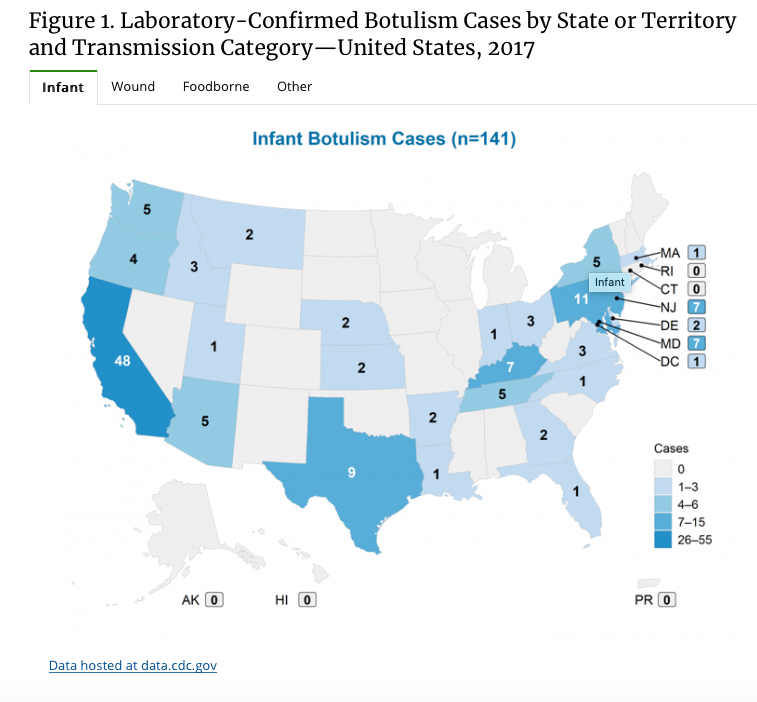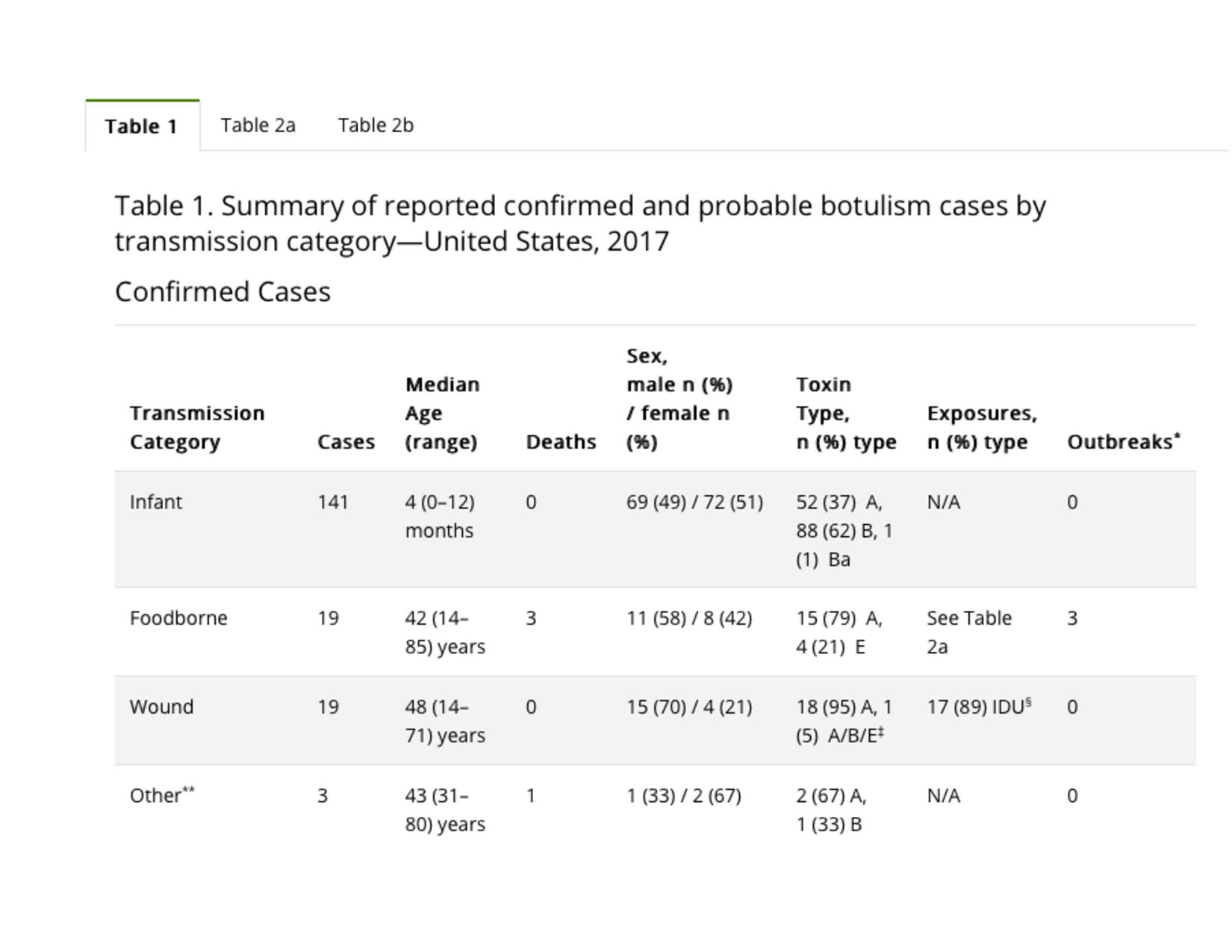Case Presentation: A 32-day-old full-term male presented to his physician (PCP) for constipation, oral thrush & poor feeding. Mother reported that the infant had been active and feeding well until 6 days prior to presentation. He was seen by his PCP at that time for oral thrush and prescribed a course of Nystatin. He was seen 2 days later in a local ED for poor feeding and persistent thrush. He was noted to be well-appearing, hydrated, and was discharged home with no change in his management. Over the next 4 days his intake progressively declined to 4 oz/day. He returned to the PCP where his mother reported fatigue while feeding and choking. PCP noted a weight decrease of 190 grams in 6 days, lethargy & hypotonia with a weak cry. He was referred to our tertiary care center where additional history revealed decreased stooling and no exposure to honey or other toxins. His initial workup consisting of CBC, CMP, urine drug screen, CRP, Procalcitonin, Mg, Phosphorous, CK, Ammonia, TSH/FT4, UA, VBG, and CT head was unremarkable. Exam revealed evidence of dehydration, diffuse hypotonia, soft cry, weak suck, decreased symmetric Moro reflex, intact gag and anal wink. A stool sample was sent to a state lab for botulinum toxoid testing. IV fluids were provided for rehydration, and a nasogastric (NG) tube was placed for nutrition. His weakness persisted. A neurological workup- EEG, EMG & MRI Brain, was unremarkable. Infectious disease was consulted and agreed with suspicion of infantile botulism (IB). Additional history revealed that mother worked in landscaping. Treatment with BabyBIG (botulinum toxin immunoglobin) was provided after which the infant’s symptoms gradually improved. The NG tube was removed, and oral feeding returned to baseline with good weight gain. At discharge( day 8), State Lab confirmed his stool specimen was positive for Clostridium botulinum Type A.
Discussion: Botulism is a severe illness caused by toxin-mediated blockade of acetylcholine release across the neuromuscular junction. Up to 3/4th of cases per year in the USA involve infants(1). Infantile Botulism(IB) is caused by the ingestion of spores that colonize the infant’s intestinal tract and produce toxin. Spore source is microscopic dust particles. Unprocessed honey is one avoidable source. Initial presenting symptom is often constipation, followed by lethargy, weak cry, poor feeding and dehydration. Untreated infants become progressively weak, hypotonic and hyporeflexic, showing bulbar and spinal nerve abnormalities(2). Routine diagnostic studies are not helpful. EMG may help corroborate but is not diagnostic(3). Clinicians must maintain a high index of suspicion for IB to promote early diagnosis, allowing for early institution of treatment and supportive measures. BabyBIG works by binding with the botulism toxin, promoting clearance and thereby shortening illness course. Treatment should be initiated promptly and not delayed for laboratory confirmation of diagnosis(4). Antibiotics will not affect the course of illness or recovery. With prompt treatment full recovery is expected(5); the case fatality rate in IB is < 1% . Infants may excrete the toxin and pathogen in stool for months, and appropriate safety measures should be taken.
Conclusions: Constipation is the most common presenting symptom for patients with IB. A high index of suspicion is needed to make a timely diagnosis. Honey has become linked with IB, but it is only one source made public because it is avoidable. Don’t take IB off your differential just because there isn’t honey around the house.


